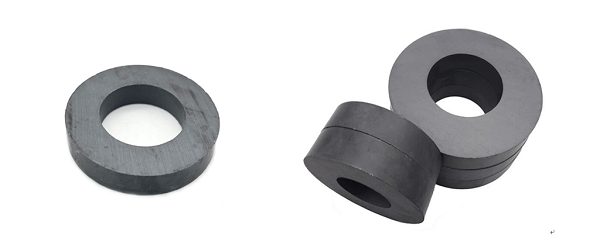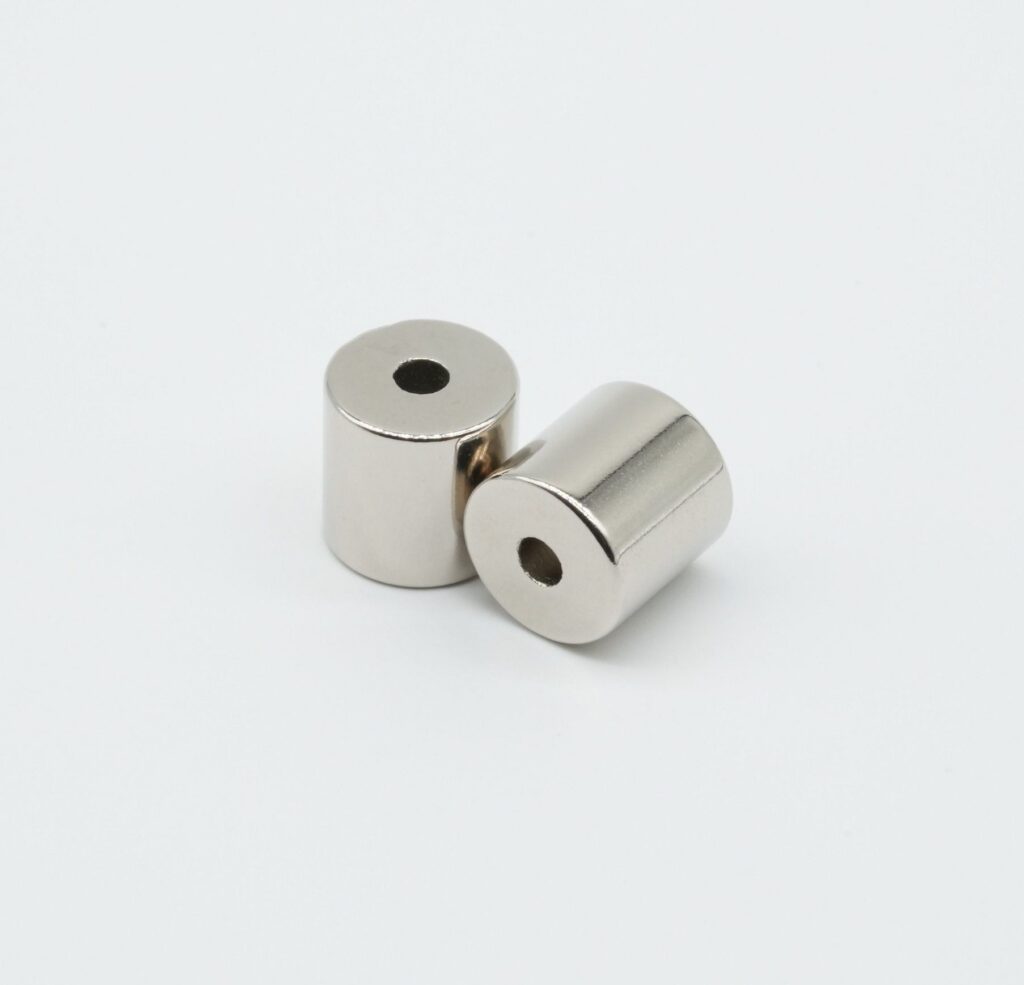Inside the Magnetron: How Microwave Magnets Power Microwave Generation
At the heart of every microwave oven is the magnetron, a special type of vacuum tube essential for generating the microwaves that heat your food. Simply put, the magnetron works by shooting a stream of electrons across a vacuum, creating high-frequency electromagnetic waves—those microwaves we rely on daily.
But how do these electrons move just right? That’s where the magnets come in. Inside the magnetron, strong static magnetic fields shape and guide the path of electrons, forcing them to whirl around rather than just fly straight. This controlled electron movement causes them to hit resonant cavities inside the tube, producing the microwaves.
Now, here’s a common misconception: not just any magnet will do the job. The magnets inside microwave ovens are industrial-grade, designed to withstand heat and perform reliably over time. They are quite different from the simple fridge magnets you stick on your door. Their strength and durability are specifically engineered to keep the magnetron running efficiently.
That’s where specialists like NBAEM come in. With deep expertise in magnet assemblies, NBAEM provides tailored magnetic components made to exact specs for microwave manufacturers worldwide. Their high-quality magnets ensure consistent microwave generation, helping your oven deliver perfectly heated meals every time.
The Primary Types of Microwave Magnets: A Breakdown

magnet fàinne ferrite
Microwave ovens mainly rely on ferrite (ceramic) magnets agus neodymium (rare earth) magnets to create the essential magnetic fields inside the magnetron. Each type comes with its own materials, specs, and typical uses.
Magnetan Ferrite (Ceramic)
Ferrite magnets are made from iron oxide combined with barium or strontium carbonate. They’re known for being inexpensive, durable, and resistant to heat, which made them the go-to magnets for older microwave models. Their magnetic strength is moderate, which is enough to guide electrons effectively but limits miniaturization and efficiency.
Buannachdan:
- Èifeachdach sa chosgais
- Heat resistant (up to around 300°C)
- Corrosion resistant
- Stable performance over time
Sàbhalaidhean:
- Bulkier than rare earth magnets
- Lùth magnetach nas ìsle
- Less efficient for compact design
Ceramic magnets are still favored in many household appliances for their balance of durability and price. You’ll find ferrite ring magnets in classic microwave ovens where long-term reliability is key.
Neodymium (Rare Earth) Magnets

Neodymium magnets are made from an alloy of neodymium, iron, and boron (NdFeB). These magnets pack a punch in magnetic strength, allowing microwave manufacturers to reduce size and increase power efficiency in modern appliances. Their high coercivity keeps the magnetic field stable even under heat, although they require protective coatings to prevent corrosion.
Buannachdan:
- Extremely strong magnetic fields (much stronger than ferrite)
- Smaller size for the same magnetic effect
- Enables compact, efficient microwave designs
Sàbhalaidhean:
- More costly than ceramic magnets
- Sensitive to heat above 80-150°C without special grades
- Prone to corrosion without a coating
Thanks to their power density, neodymium magnets dominate the latest microwave magnetron assemblies, offering improved performance without added bulk.
Emerging Alternatives and Future Trends
Samarium cobalt magnets and hybrid materials are gaining ground as manufacturers look for higher temperature stability and corrosion resistance. These magnets offer a middle ground, boasting strong magnetic fields like neodymium but better heat tolerance, making them ideal for future microwave ovens running hotter or at higher power levels.
Supplier Spotlight: NBAEM’s Magnet Customization
At NBAEM, we specialize in producing custom ferrite and neodymium magnet assemblies tailored for magnetron electron guidance. Whether you need high-temperature ferrite magnets or precision NdFeB ring magnets, NBAEM offers ISO-certified quality backed by flexible customization and sample service. Our experience ensures you get reliable, microwave-grade magnets suited to your production needs.
For more on high-performance permanent magnets, check out NBAEM’s range of hot press magnets designed for demanding industrial applications.
Extracting and Repurposing Microwave Magnets: A Step-by-Step Guide
If you’re thinking about salvaging magnets from old microwaves, safety should be your top priority. Microwave ovens contain high-voltage components that can shock you even when unplugged, so always wear protective gloves and eye protection. Make sure the oven is unplugged and hasn’t been used for a while before starting.
DIY Extraction Steps:
- Disassemble the Microwave: Remove the outer casing carefully with a screwdriver.
- Remove the Magnetron: This is the core of the microwave where magnetron electron guidance happens. It’s usually secured with screws.
- Pry Off the Ring Magnets Carefully: Most microwaves contain ferrite ring magnets around the magnetron. Use a flat tool to gently detach them without cracking.
Yield and Testing:
- Salvaged magnets are typically ferrite or sometimes neodymium ring magnets with moderate strength.
- To check their magnetic power, use a simple magnetometer or a DIY test like attracting small metal objects.
- Expect the magnets to have a curved, ring shape designed specifically for microwave magnetron assemblies.
Repurposing Ideas:
- Workshop magnets for holding tools.
- Crafts that require strong, durable magnets.
- Advanced DIY projects like custom speakers or educational physics demos.
If you’re local and searching for extraction tutorials or community tips, popular keywords include “DIY microwave magnet extraction” and “repurpose old appliance magnets.” For in-depth information on magnet usage and types, check specialized pages on the magnet assembly process, which also highlight important safety steps.
Remember, extracting and repurposing microwave magnets can be rewarding but always prioritize safety.
Safety, Maintenance, and Common Myths About Microwave Magnets
When dealing with microwave magnets, safety should always come first. These magnets are strong permanent magnets, often ferrite or rare earth types, and careless handling can cause injuries or damage. Always avoid placing magnets near electronic devices, credit cards, or pacemakers. Also, remember that the magnetron inside microwaves operates under high voltage, so never attempt repairs without unplugging and waiting for capacitors to discharge.
Over time, microwave magnets can lose strength or crack, especially if exposed to high heat or physical stress. Signs you need to replace them include decreased microwave efficiency or unusual noise during operation. It’s a good practice to inspect magnets during regular maintenance checks for chips, warping, or corrosion.
A common myth is that upgrading microwave magnets with neodymium or other powerful magnets can improve performance. In reality, magnet design in magnetrons is carefully engineered for optimal electron guidance, and switching magnets without proper specs can cause failure or safety hazards.
For better environmental management, recycling old microwave magnets is encouraged. Ferrite magnets are easier to recycle, while rare earth types require specialized handling. When sourcing replacements, rely on trusted suppliers like NBAEM that offer high-quality, certified magnets with clear recycling and environmental policies.
If you want to know more about the fundamental principles behind magnets used in appliances, NBAEM provides detailed explanations on how ceramic magnets work and what materials attract magnets, valuable for understanding their safe maintenance.
Sourcing High-Quality Microwave Magnets: Why Choose a Specialist?
When it comes to microwave magnets, quality makes all the difference. Cheap knockoffs may seem tempting but often fail under high heat and long use, affecting your microwave’s performance and safety.
Market Overview: Quality vs. Cheap Knockoffs
| Feart | Magnetan Àrd-inbhe | Cheap Knockoffs |
|---|---|---|
| Neart Magnetach | Stable, high-grade (e.g., NdFeB, ferrite) | Weak or inconsistent |
| Freagairteachd teas | Reliable up to 200°C+ | Poor thermal tolerance |
| Fada-beatha | Durable, maintains magnetism | Quick degradation |
| Safety Standards | ISO-certified, safe coatings | Unverified safety |
| Gnàthachadh | Tailored sizes and specs | One-size-fits-all |
Why NBAEM Stands Out
NBAEM offers ISO-certified microwave magnets that meet strict quality controls. With expertise in rare earth and ferrite magnets, they provide customized magnetron components designed for optimal electron guidance and durability.
- Customization: Tailor magnet size, shape, material, and coating.
- Fast Shipping: Global delivery with reliable packaging.
- Taic Theicnigeach: Guidance on selecting the right magnet for your microwave model.
Learn more about the specifics behind high-quality neart magnet NdFeB and why magnet grade is crucial.
Buyer’s Quick Guide: What to Look For
| Factar | Key Point | NBAEM Offer |
|---|---|---|
| Ìre Magnet | Ferrite or Neodymium (NdFeB) | Both available |
| Còmhdach | Nickel or epoxy for corrosion | Customized coatings to order |
| Meud & Cruth | Must fit specific magnetron ring | Precise manufacturing quality |
| Price Range | Reflects material & quality | Competitive pricing with value |
Choosing the right supplier means avoiding magnet failures, ensuring your microwave oven runs smoothly and safely. For expert advice and custom orders, reach out to NBAEM’s team today—your trusted source for microwave magnets assembly and supplies.





Fàg Beachd